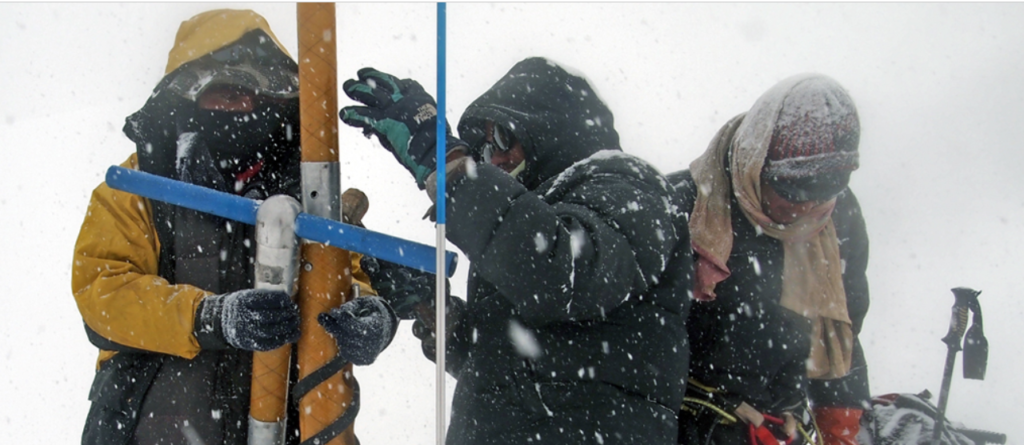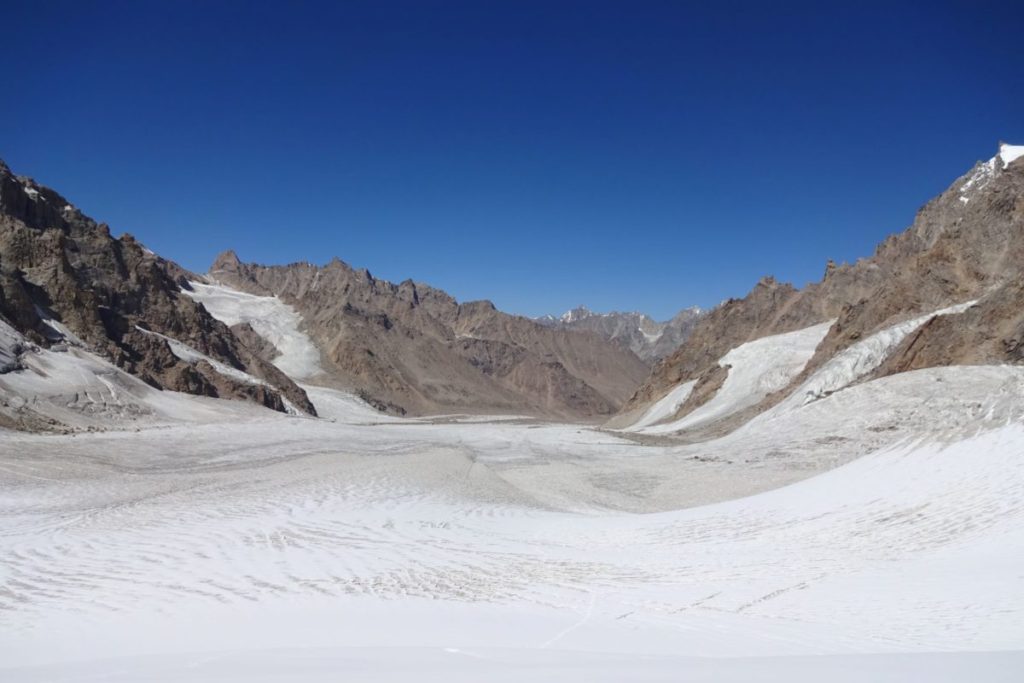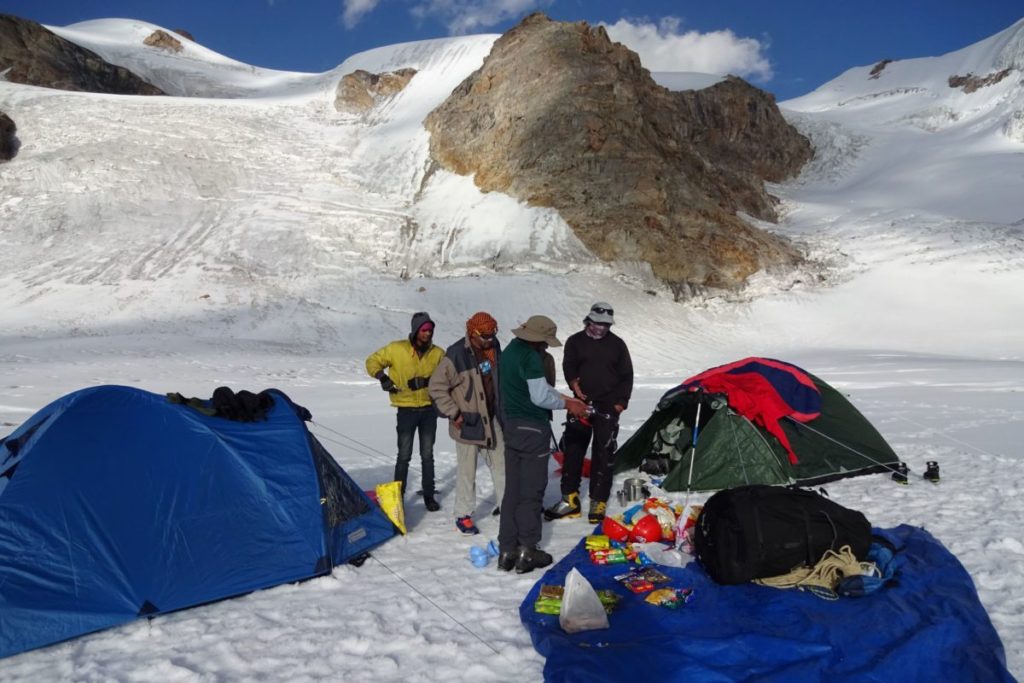
- Two studies shed light on glacier health in the western Himalayas, with results that are in contrast with previous speculation on glacial melts, and could better inform glacier protection and policy.
- Summer-monsoonal snowfall plays an important role in maintaining glacier mass in the western Himalayan region. More frequent and strong snowfall in the years ahead could likely sustain the health of glaciers, says one study.
- Another study from the western Himalayan region reveals that biomass burning and not fossil fuel is the primary driver behind carbon-induced melting of glaciers in the region.
Summer-monsoonal snowfall plays an important role in maintaining glacier mass in the western Himalayas. If this snowfall is more frequent and strong in the years ahead, the health of glaciers will most likely sustain, says a latest study by a group of researchers from across India.
Though the health of the glaciers mainly depends on the fluctuations in air temperature, it is also influenced by the sporadic summer-monsoonal snowfall. With more extreme events in the coming years, where frequency and intensity of this snowfall is expected to be higher, western Himalayan glaciers could still continue to sustain, steering away from the expectation that climate change will cause increasing glacier mass loss.
The western Himalayan region holds about 15 percent of the total ice mass of the Himalayas and the meltwater from these glaciers is significant for the surrounding countries.
The study was done between 2002-2019 by a set of researchers from different institutes across India led by Jawaharlal Nehru University (JNU) at the Chhota Shigri Glacier in the Lahaul-Spiti valley (Himachal Pradesh) in the western Himalayan region. It was published in the Journal of Glaciology in June 2020.
The study is based on the longest recorded field-based datasets in the whole Himalayan range and the observed research components include “mass balance, ice velocity, high-altitude meteorology and glacier runoff, and their interactions under the ongoing climate change,” according to the researchers. They noted that the field-based results of mass wastage on this glacier since 2002 “are in good agreement with the available remotely-sensed mass wastage of the whole Lahaul-Spiti region.” This validates Chhota Shigri glacier as a representative glacier – or “benchmark glacier” as the study notes – for the whole region when considering changes in mass loss under changing climate.
It found that the Chhota Shigri Glacier is losing its mass similar to the glaciers in other parts of the world and that the rate of mass loss is not extraordinarily high as against what has been speculated in the past.
Arindan Mandal, a researcher from JNU’s School of Environmental Sciences and the lead author of the study, said that the Chhota Shigri Glacier has “drained, on an average, half a meter water equivalent of ice into the Indus River over the past two decades.”
“This ice loss is reflected in 25-42 percent decrease in surface ice flow. Although this rate of glacier ice loss is similar to the global average, there are concerns for the downstream meltwater users for irrigation and livelihood. Our study showed that the summer snowfalls are very important for glacier nourishment and they protect the glacier from high melting,” Mandal told Mongabay-India.
He noted that with this variety of long-term field-based datasets, the Chhota Shigri Glacier “becomes the most (longest) studied glacier for tracking climate change in the Himalayan region”.

The Chhota Shigri glacier in Himachal Pradesh. Photo by Mohd. Farooq Azam.
However, the study noted that this glacier is trying to adjust to the changes in climate through its retreat. But at the higher altitudes, the ice flow hasn’t changed much which indicates that there is less impact of warming at the higher altitudes.
Any changes in the Himalayan region are significant for the lives of the millions living in the Hindu Kush Himalayan (HKH) region as they are among the main drivers of the region’s water resources. A report in February 2019 had said that the HKH region that supports nearly 40 percent of the global population, directly or indirectly, is under severe stress due to the rise in global temperatures. The region is also a source of 10 major river basins and more than three billion people benefit from the food produced in its river basins.
Alagappan Ramanathan, who is a professor at the JNU’s School of Environmental Science, said that the air temperature change is controlling the river runoff, which means a warmer world is likely to be associated with higher water in the Himalayan rivers. “There could be a seasonal shift in glacier runoff and which will be a major concern for seasonal crops like wheat and cotton production in north-western India,” said Ramanathan, who is also one of the authors of the study.
Biomass burning is the main source of black carbon
To understand the impact of climate change on glaciers it is important to also look at the impact of black carbon (BC) on them. According to another recent study, published in journal Environmental Science and Technology in June 2020, factors like wood burning and forest fires – and not the carbon emitted from the use of fossil fuel – are the primary drivers behind carbon-induced melting of glaciers in the western Himalayan region.
This is in contrast to the glaciers of the central and eastern Himalayan region as they are affected significantly by carbon from the fossil fuel sources. This study was done by a team of researchers from various institutes in India, the United Kingdom, Canada, the United States of America and China.
Sarwar Nizam, who is the lead author of the study and a researcher at the Indian Institute of Technology (IIT)-Kanpur, explained that current understanding of Indian glaciers response to the impact of carbon emissions, till date, is mainly based on aerosol and remote sensing data. For this study though, the researchers have relied on samples from the field.
“The main finding of our study is that black carbon deposited on the ice surface of western Himalayan glaciers are derived only from local biomass combustion (wood burning and forest fire) sources, suggesting that glaciers melting rate in this region is more sensitive to biomass burning and not the carbon emitted from the use of fossil fuels. The samples we collected and analysed are a mixture of sediments, microorganism and carbon accumulated over 6,000-7,000 years on the glacier surface,” Nizam told Mongabay-India.
He further stated that previous studies from the central and eastern Himalayan region reported carbon emission from both fossil fuel and biomass burning as equally important in deteriorating our glacier health.
The study stressed that the large geographical spread (more than 2,500 kilometres) of the Himalayas over different climate regimes makes it very difficult to extend the findings of one climate regime to the other.

The researchers’ camps at the Chhota Shigri glacier. Photo by Mohd. Farooq Azam.
Mohd. Farooq Azam, who is an assistant professor at the IIT Indore and a co-author of both the studies emphasised that the “long-term investigation of mass balance and meteorological conditions on Chhota Shigri Glacier already indicated that summer-monsoon snowfalls, together with temperature, play a major role for glacier’s health in the Himalaya.”
“Deposition of black carbon on glacier surfaces increases the radiative forcing by decreasing the surface albedo (resulting in absorption of far more solar radiation rather than its reflection from the surface) and thus enhances the rate and seasonal duration of meltwater production from the glaciers. The finding of negligible fossil fuel-derived BC compared to biomass-derived BC on Chhota Shigri Glacier put a new line of investigation as the radiative forcing of biomass-derived BC and fossil fuel-derived BC is different. Such long-term mass balance and meteorological studies coupled with BC deposition are required from different climatic regimes to develop a holistic picture of the whole Himalaya and to predict the future water evolution with improved confidence,” Azam told Mongabay-India.
Meanwhile, going ahead, Nizam emphasised that the findings of their study are important as they provide the policymakers with the scientific knowledge about the impact of local biomass burning in the Himalayan region.
“The bottom line is that local biomass burning is an important factor and thus policymakers need to focus on this aspect as well while taking decisions about steps to protect glaciers. This means that the frequent occurrence of forest fires in Himalaya, massive burning of agriculture waste in the nearby Punjab-Haryana region has a huge impact on the glaciers in the region. We need to focus on protecting them,” said Nizam.
Article Credit: india.mongabay
